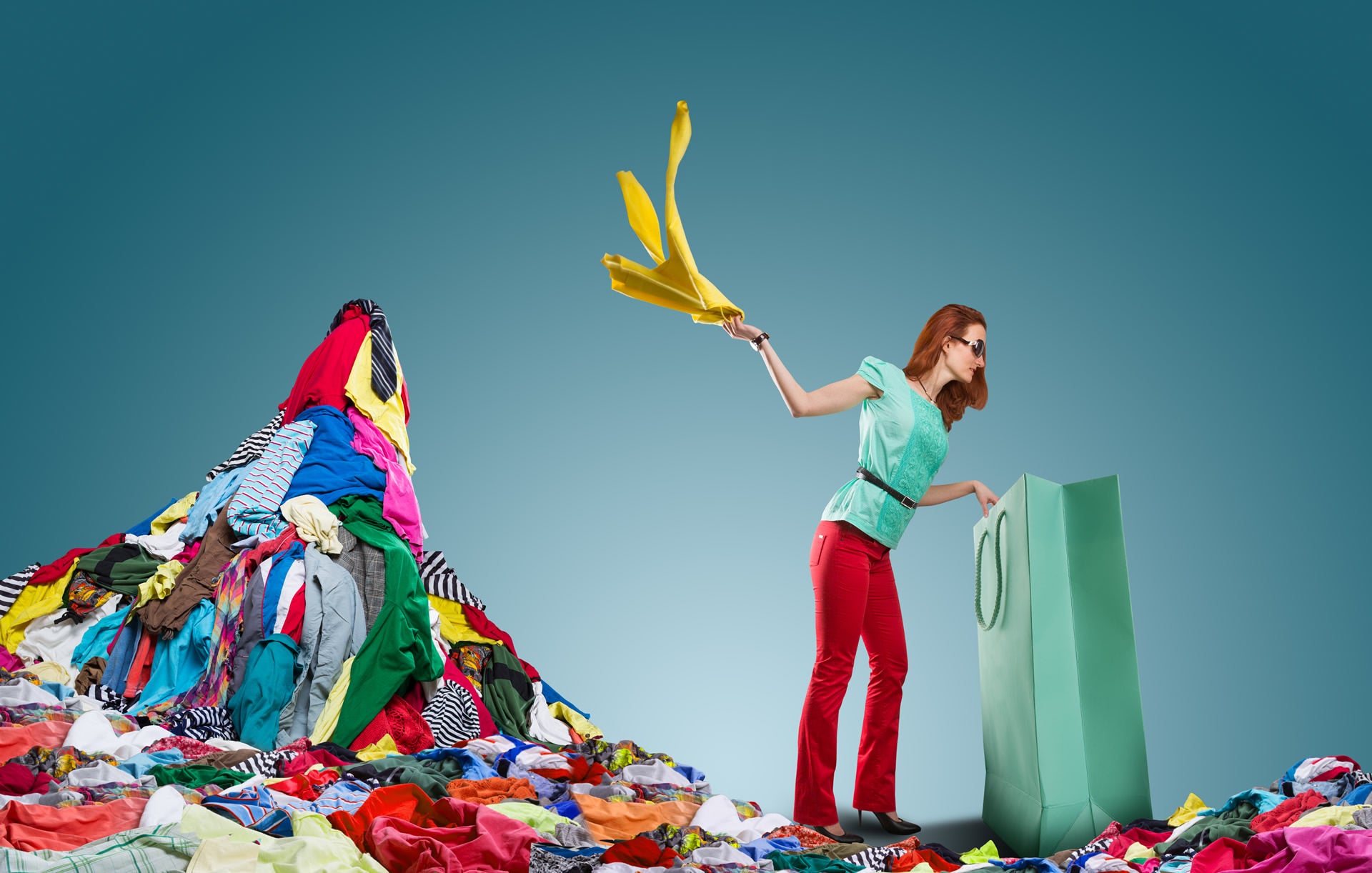HOW CAN THE FASHION INDUSTRY BECOME MORE SUSTAINABLE?
It’s a sad fact. Second to oil, fashion and the textiles that create it, is the most polluting industry in the world. Says Business of Fashion, every stage in a True Fashionista garment’s life threatens our planet and its resources. Sigh. The truth hurts. The industry we know and love has an embarrassing back story, like that crazy uncle with a sketchy past that causes an uncomfortable silence when he walks into the room at Christmas.
But we digress. It can take over 5,000 gallons of water to produce just two pounds of cotton, roughly the equivalent of a single t-shirt and pair of jeans. Here’s another chilling statistic: Close to 8,000 different chemicals are used to turn raw materials into clothes, which includes all the dyeing and finishing processes needed. And all those extra pieces of fabric, mistakenly sewn discards, and outdated wear no one wants anymore? They all typically end up in giant landfills. Sigh again. The question remains, how can fashion even begin to regain sustainability?
Greenpeace Global Communications Strategist Tristan Tremschnig stated in 2015, “In order to reduce fashion’s environmental impact, people must pressure the suppliers to fashion’s biggest brands to publicly disclose their pollution.” Someone must have been paying attention, as Forbes reported via Lyst in 2018 a 47% increase in shoppers looking for items that carried ethical and style credentials such as “vegan leather” and “organic cotton”.
French company Veja’s V10 sneaker topped Instagram searches last year with its more environmentally-friendly materials like recycled polyester and B-mesh made from recycled plastic bottles and solid fair trade support in its supply chain. Budapest-based Nanushka brand debuted its vegan leather clothing at New York Fashion Week last February, and joined the Ellen McArthur Foundation this spring, working toward a circular supply chain in its environmental efforts.
The newest royal, Duchess Meghan (Will we ever stop using Markle? She’s married and pregnant, for crying out loud!) wasted no time making her commitment to sustainability a thing in 2018, wearing outfits from environmentally conscious labels. Markle sported $195 skinny jeans by Outland Denim six times during a recent tour, and the ripple effect rolled into a reported 950% sales increase. The revenue boost afforded Outland the opportunity to hire seamstresses who were formerly enslaved or exploited, as well as local women at risk of falling into poverty. Markle’s choice also means a demand for more product, and the need to hire upwards of 30 additional seamstresses away from possible exploitation and slavery for its Cambodian production house. Outland also prioritizes paying employees living wages, and offering education programs. Warm and fuzzies all around, Duchess!
Elle UK dedicated its entire September 2018 issue to sustainability, joining forces with models and designers alike to encourage a more environmentally-friendly fashion industry. As part of the issue, they conducted eye-opening research concerning the topic among young women in the UK. Their findings included:
- 9 in 10 want to know more about sustainability in the fashion industry
- Two-thirds (62%) were unaware that the fashion industry is one of the world’s biggest polluters
- 62% are more likely to buy an item of clothing from a brand that values sustainability
- 55% found it important or very important to know where the clothes they buy come from and that they are ethically made
- 51% want to know what they can do to become more sustainable
Designers and models alike are onboard to save the planet. Brands like Rothys shoes, made from recycled plastic; Toms Shoes who, among their many charitable efforts, has committed to the gift of sustainable water systems worldwide, children’s clothing brand Petit Pli, who makes clothing that actually expands to accommodate seven sizes, and Stella McCartney, widely known for her commitment to sustainability with the use of vegan materials, “The beliefs I was raised with – to respect animals and to be aware of nature, to understand that we share this planet with other creatures – have had a huge impact on me.”
We say take the True Fashionista road and follow their lead!
The post HOW CAN THE FASHION INDUSTRY BECOME MORE SUSTAINABLE? appeared first on True Fashionistas.





























